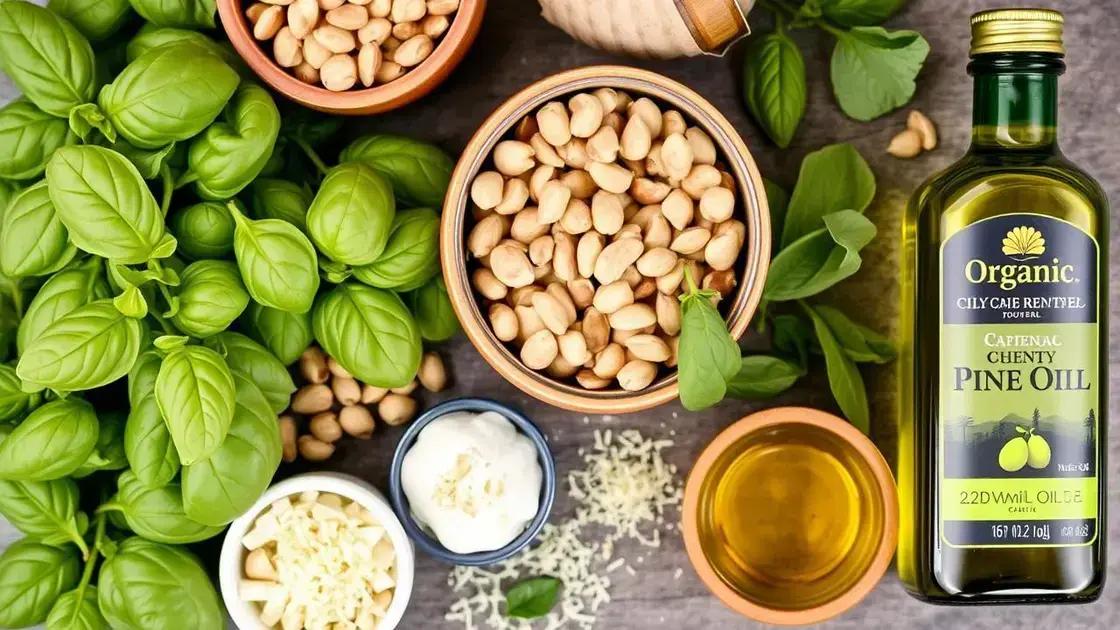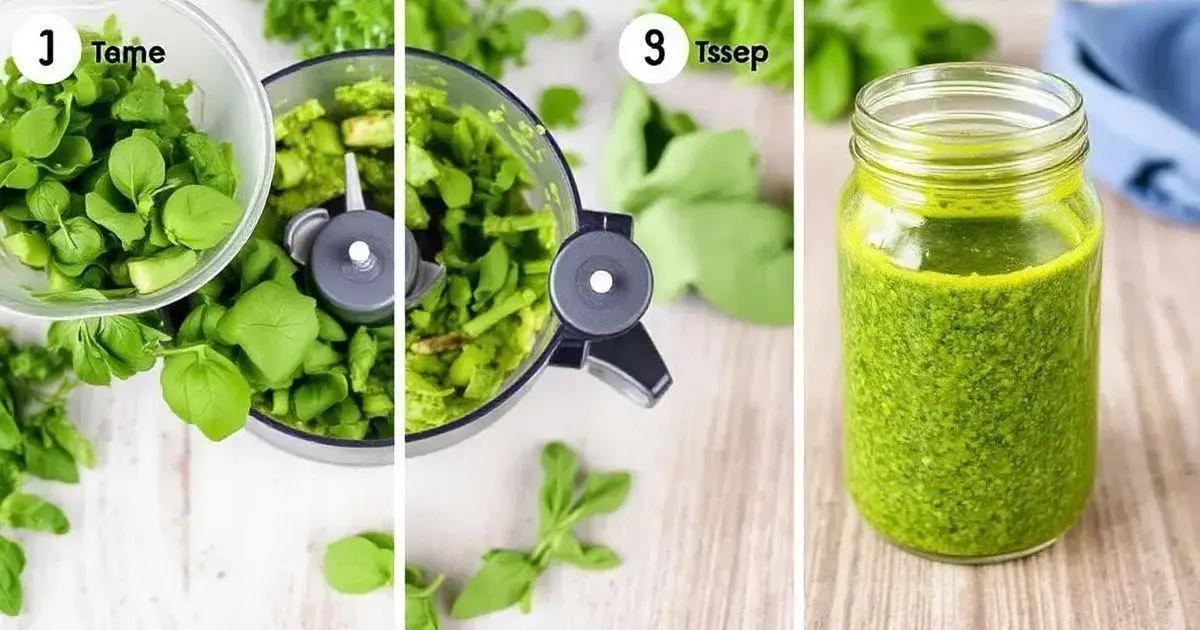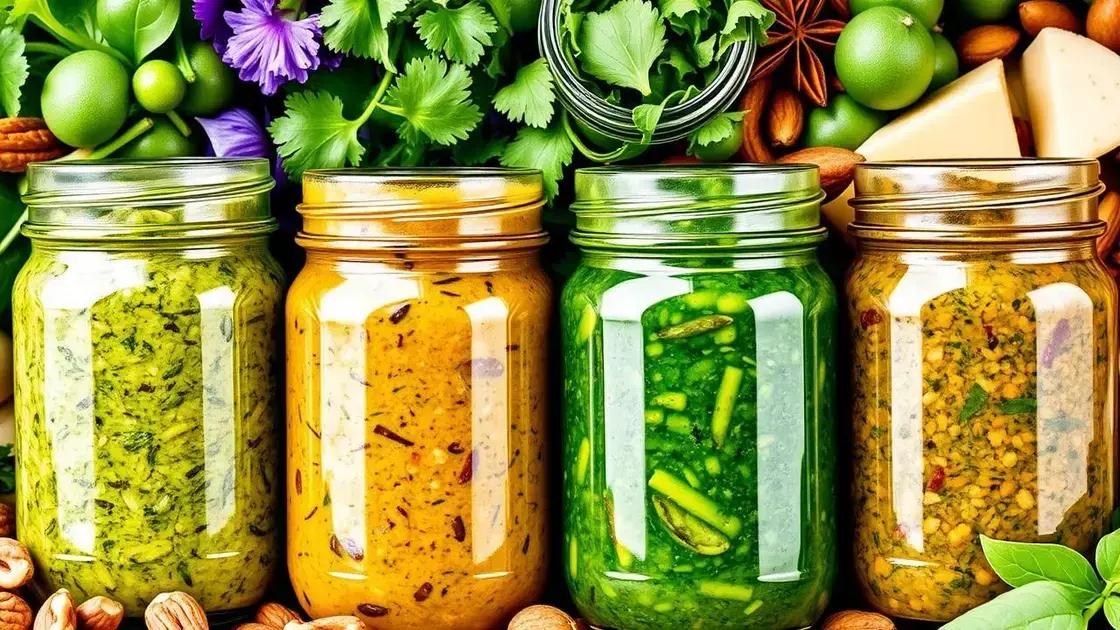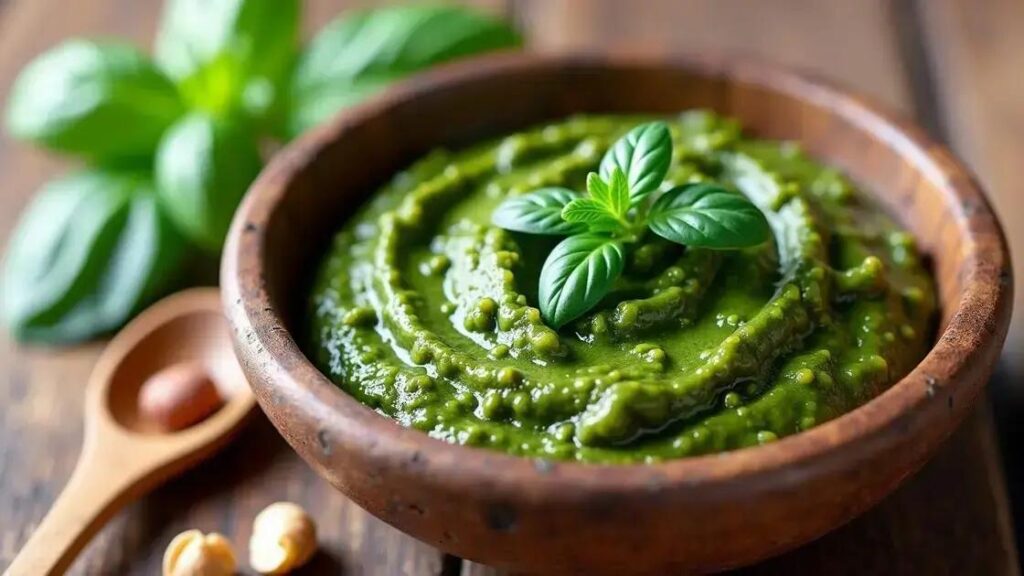Learn how to make natural pesto with nuts and basil using fresh ingredients like basil, garlic, and olive oil. Discover tips for variations, storage methods, and creative ways to use leftover pesto in your meals.
If you’ve ever wondered how to make natural pesto with nuts and basil, you’re in for a treat! This delicious sauce is not only flavorful but also incredibly easy to prepare at home. With just a handful of ingredients, you can create a vibrant green pesto that enhances everything from pasta dishes to sandwiches. In this guide, we will walk you through the ingredients you’ll need, a simple step-by-step process to make your own pesto, and tips to customize the recipe to suit your taste. By the end, you’ll be ready to elevate your cooking with this delightful and versatile condiment.
Ingredients Needed for Natural Pesto

To make delicious natural pesto, you’ll need a few key ingredients that bring out the rich flavors of this beloved sauce. Here’s what you should gather:
Fresh Basil
Start with fresh basil leaves. They are the star ingredient that gives pesto its vibrant green color and aromatic flavor.
Nuts
Select your favorite nuts. Common choices include pine nuts, walnuts, or even almonds. These add a nice crunch and essential oils to the pesto.
Garlic
Fresh garlic cloves bring a pungent kick to your pesto. You can adjust the amount based on how garlicky you want your sauce to be.
Cheese
Parmesan cheese is traditionally used for its rich, nutty flavor. You can grate it fresh or use pre-grated cheese to save time.
Olive Oil
Good quality extra virgin olive oil is crucial. It helps to blend all the ingredients smoothly and adds a fruity flavor.
Salt and Pepper
Finally, season the pesto with salt and pepper to taste. These simple seasonings enhance the overall flavor of your natural pesto.
Gathering these ingredients will set you up for success as you prepare your pesto. Each ingredient plays a unique role in creating that perfect balance of flavors.
Step-by-Step Guide to Making Pesto

Now that you have gathered all your ingredients, let’s dive into the step-by-step guide to making pesto.
Step 1: Prepare Your Ingredients
Begin by thoroughly washing the fresh basil leaves and patting them dry. Peel the garlic cloves if you haven’t done so already. If you’re using pine nuts, lightly toast them in a pan for a few minutes to enhance their flavor.
Step 2: Blend the Ingredients
In a food processor, combine the fresh basil, toasted nuts, and garlic. Pulse these ingredients until they form a coarse mixture. Scrape down the sides of the bowl as needed.
Step 3: Add the Cheese
Next, add the grated Parmesan cheese to the food processor. Continue to blend the mixture until it becomes well combined.
Step 4: Incorporate the Olive Oil
With the food processor running, slowly drizzle in the extra virgin olive oil. This step is important as it helps emulsify the pesto, making it creamy and smooth. Blend until you reach your desired consistency.
Step 5: Season and Store
Once blended, taste your pesto and season it with salt and pepper as needed. If the pesto seems too thick, you can add a little more olive oil. If not using immediately, store the pesto in an airtight container and drizzle a thin layer of olive oil on top to prevent browning.
The process is simple and quick, making it easy to whip up fresh pesto at home!
Tips for Variations on Classic Pesto

If you’re looking to mix things up, here are some tips for variations on classic pesto that you can try:
Green Variations
Feel free to swap out basil for other leafy greens. Spinach, arugula, or even kale can create unique flavors while keeping a similar texture.
Nut Alternatives
While pine nuts are traditional, you can experiment with different nuts. Walnuts, hazelnuts, or cashews can add new dimensions and nuttiness to your pesto.
Cheese Choices
Try incorporating other cheeses. For a creamier pesto, you might add ricotta or use pecorino cheese for a sharper taste compared to Parmesan.
Adding Herbs
Mix in other herbs to enhance the flavor profile. Cilantro, mint, or even oregano can add freshness and a new twist to your traditional pesto.
Flavor Boosters
Spice it up with additives like red pepper flakes for heat, or citrus zest for a zesty brightness. These can elevate the overall taste and make your pesto even more exciting.
With these tips, you can easily customize your pesto to match your taste preferences or to suit various dishes. Don’t hesitate to be creative!
Storing and Using Leftover Pesto

Properly storing your pesto will help preserve its freshness and flavor. Here are some tips for storing and using leftover pesto:
Storage Containers
Use airtight containers to store your leftover pesto. Glass jars or plastic containers work well, ensuring that air does not reach the pesto, which can cause it to brown.
Refrigeration
You can keep your pesto in the refrigerator for up to a week. Just remember to add a thin layer of olive oil on top to help prevent oxidation and maintain the vibrant green color.
Freezing Pesto
If you want to store pesto for a longer time, freezing is a great option. Pour the pesto into ice cube trays for easy portioning, and once frozen, transfer the cubes into a freezer bag. This way, you can thaw just what you need!
Using Leftover Pesto
Leftover pesto is incredibly versatile. You can mix it into pasta dishes, spread it on sandwiches, or use it as a marinade for meats and vegetables. You can also add it to soups for a flavorful boost.
Reviving Thawed Pesto
When you’re ready to use frozen pesto, simply thaw it in the refrigerator overnight or place the container in warm water for a quicker method. If it seems a bit thick, stir in a bit of olive oil to restore the desired consistency.
By following these tips, you can enjoy your homemade pesto on multiple occasions and reduce waste!
Conclusion: Elevate Your Meals with Natural Pesto
Making natural pesto with nuts and basil is a delightful and easy way to enhance your cooking. By following our step-by-step guide and utilizing fresh ingredients, you can create a flavorful sauce that’s perfect for pasta, sandwiches, and more.
Exploring variations and storing your leftover pesto effectively allows you to enjoy this vibrant condiment in many meals. Whether you opt for classic basil or get creative with different greens and nuts, pesto can add a burst of flavor to any dish.
So get started on your pesto journey today and experience the tasty benefits of this homemade classic!
FAQ – Frequently Asked Questions about Making Natural Pesto
What ingredients do I need to make natural pesto?
To make natural pesto, you’ll need fresh basil, nuts (like pine nuts or walnuts), garlic, Parmesan cheese, extra virgin olive oil, and salt and pepper.
How long can I store leftover pesto?
You can store homemade pesto in the refrigerator for up to a week. For longer storage, freezing is a great option; it can last for several months in the freezer.
Can I use other greens instead of basil?
Yes! You can experiment with other greens like spinach, arugula, or kale to create unique variations of pesto with different flavors.
What type of nuts can I use in pesto?
While pine nuts are traditional, you can also use walnuts, almonds, or hazelnuts in your pesto for a different taste and texture.
How can I use leftover pesto?
Leftover pesto is versatile! Use it in pasta dishes, as a spread on sandwiches, as a marinade for meats, or add it to soups for extra flavor.
How do I prevent my pesto from turning brown?
To prevent browning, store your pesto in an airtight container and drizzle a thin layer of olive oil on top before sealing.












